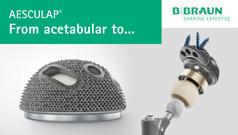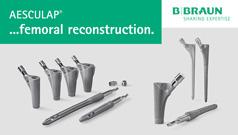Exam Corner
Shoulder
SICOT Associate Member & SICOT Newsletter Editorial Board Member - London, United Kindgom
Questions
The humeral head is normally:
Retroverted 30 degrees to the transepicondylar axis of the distal humerus and its articular surface is inclined 150 degrees superiorly relative to the shaft
Retroverted 30 degrees to the transepicondylar axis of the distal humerus and its articular surface is inclined 130 degrees superiorly relative to the shaft
Anteverted 30 degrees to the transepicondylar axis of the distal humerus and its articular surface is inclined 150 degrees superiorly relative to the shaft
Retroverted 45 degrees to the transepicondylar axis of the distal humerus and its articular surface is inclined 130 degrees superiorly relative to the shaft
Anteverted 30 degrees to the transepicondylar axis of the distal humerus and its articular surface is inclined 130 degrees superiorly relative to the shaft
The following structures are related to the rotator interval except:
Coracohumeral ligament
Supraspinatus
Subscapularis
Transverse humeral ligament
Coracoacromial ligament
What is a type VI SLAP lesion?
Bucket handle tear of the labrum with intact biceps anchor
Fraying, intact anchor
Bucket handle tear into the biceps insertion
Superior flap tear
Detachment of the biceps anchor
The primary restraint to anterior, posterior and inferior glenohumeral translation for 45-90 degrees of glenohumeral elevation is:
Superior glenohumeral ligament
Middle glenohumeral ligament
Transverse humeral ligament
Inferior glenohumeral ligament
Coracoacromial ligament
The Crank test is used to diagnose which of the following pathologies?
Rotator cuff tear
Impingement
SLAP tear
Instability
Cervical spine pathology
A Putti Platt procedure is an instability correction procedure and includes:
Subscapularis advancement capsular coverage
Subscapularis transfer to greater tuberosity
Transfer of biceps laterally and posteriorly
Coracoid transfer to inferior glenoid
Pants over vest procedure
A Boyd-Sisk procedure is an instability correction procedure and includes:
Subscapularis advancement capsular coverage
Subscapularis transfer to greater tuberosity
Transfer of biceps laterally and posteriorly
Coracoid transfer to inferior glenoid
Pants over vest procedure
A Bristow procedure is an instability correction procedure and includes:
Subscapularis advancement capsular coverage
Subscapularis transfer to greater tuberosity
Transfer of biceps laterally and posteriorly
Coracoid transfer to inferior glenoid
Pants over vest procedure
Which of the following nerve injuries is associated with lateral winging of the scapula:
Suprascapular nerve
Spinal accessory nerve
Long thoracic nerve
Dorsal scapular nerve
Axillary nerve
The following structures are potentially endangered in a posterior approach to the shoulder except:
Axillary nerve
Posterior circumflex humeral artery
Suprascapular nerve
Musculocutaneous nerve
Circumflex scapular vessels
Answers
b
Reference: Review of Orthopaedics, Millere
Discussion: The interval includes the capsule and coracohumeral ligament that bridge the gap between supraspinatus and subscapularis. It is bounded medially by the lateral coracoids base, superiorly by the anterior edge of the supraspinatus and inferiorly by the superior border of the subscapularis. The transverse humeral ligament forms its apex laterally.
Reference: Review of Orthopaedics, Millerd
Discussion: Type I - Labral and biceps fraying, intact anchor / Type II - Labral fraying with detachment of the biceps tendon anchor / Type III - Bucket handle tear of labrum with intact biceps tendon anchor / Type IV - Bucket handle tear with detached biceps tendon anchor / Type V- SLAP + anterior Labral tear (Bankart) / Type VI: Superior flap tear / Type VII: SLAP + capsular injury
Reference: Review of Orthopaedics, Millerd
Reference: Review of Orthopaedics, Millerc
Discussion: The Crank test includes full abduction, humeral loading and rotation and is used to diagnose SLAP tears.
Reference: Review of Orthopaedics, Millera
Reference: Review of Orthopaedics, Millerc
Reference: Review of Orthopaedics, Millerd
Reference: Review of Orthopaedics, Millerb
Discussion: Spinal accessory nerve supplies trapezius and is associated with lateral winging of the scapula when injured. Long thoracic nerve supplies serratus anterior and is associated with medial winging of the scapula when injured. Dorsal scapular nerve injury is associated with rhomboideus palsy. Osseous origins for winging include osteochondromas and fractures malunion.
Reference: Review of Orthopaedics, Millerd
Discussion: All of the structures listed are potentially endangered in a posterior approach to the shoulder except the musculocutaneous nerve which is at risk during an anterior approach to the shoulder.
Reference: Surgical Exposures in Orthopaedics, Hoppenfeld


















